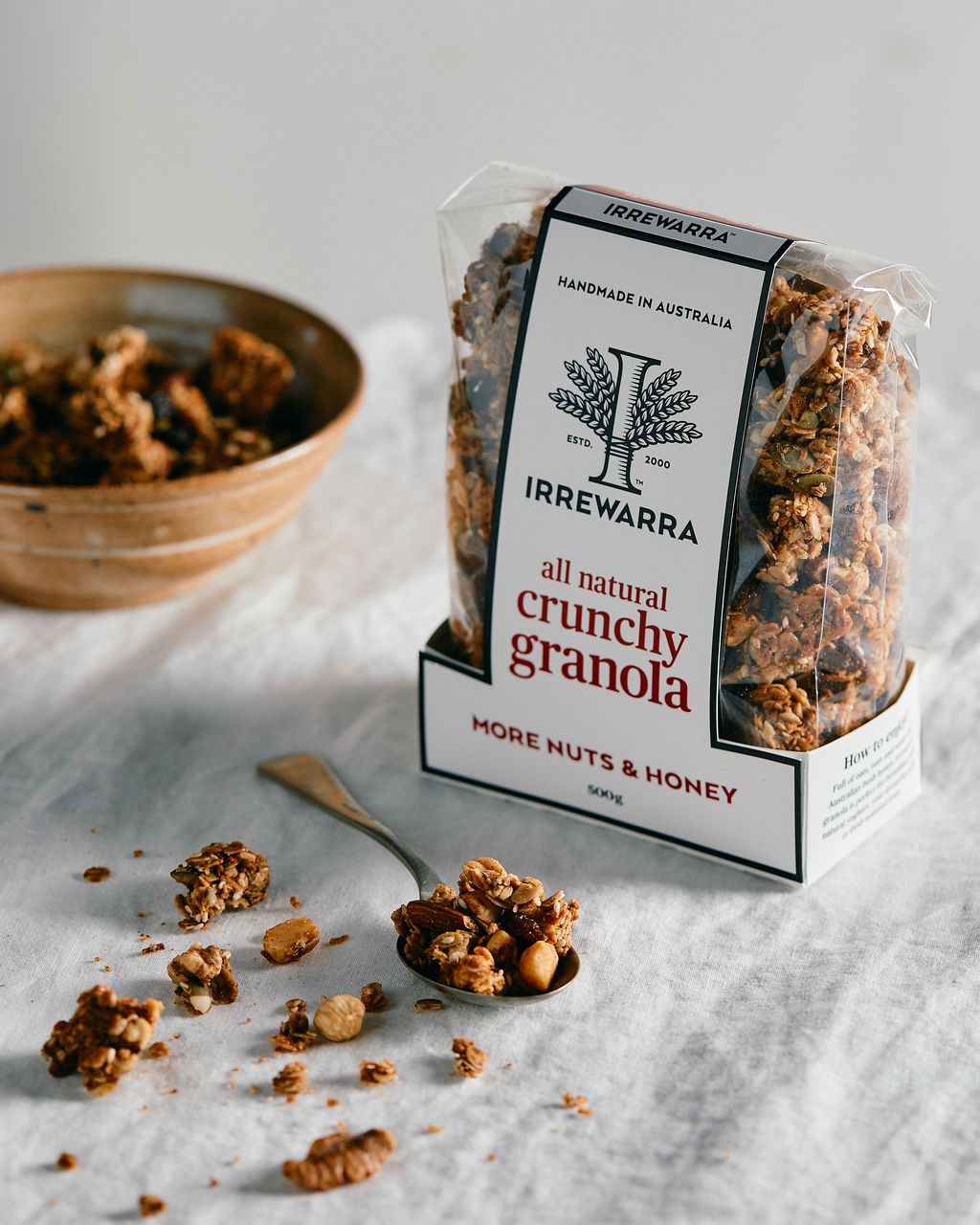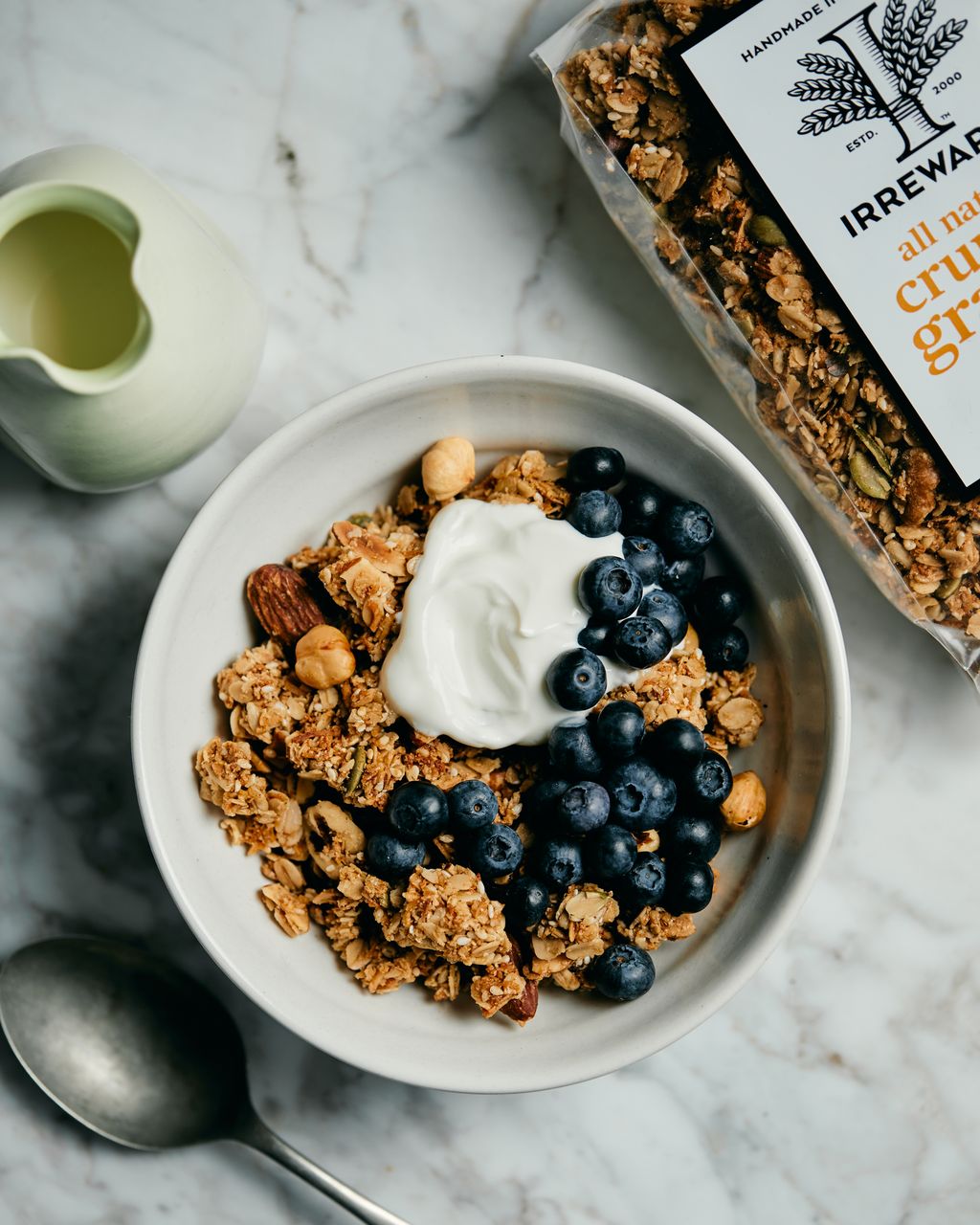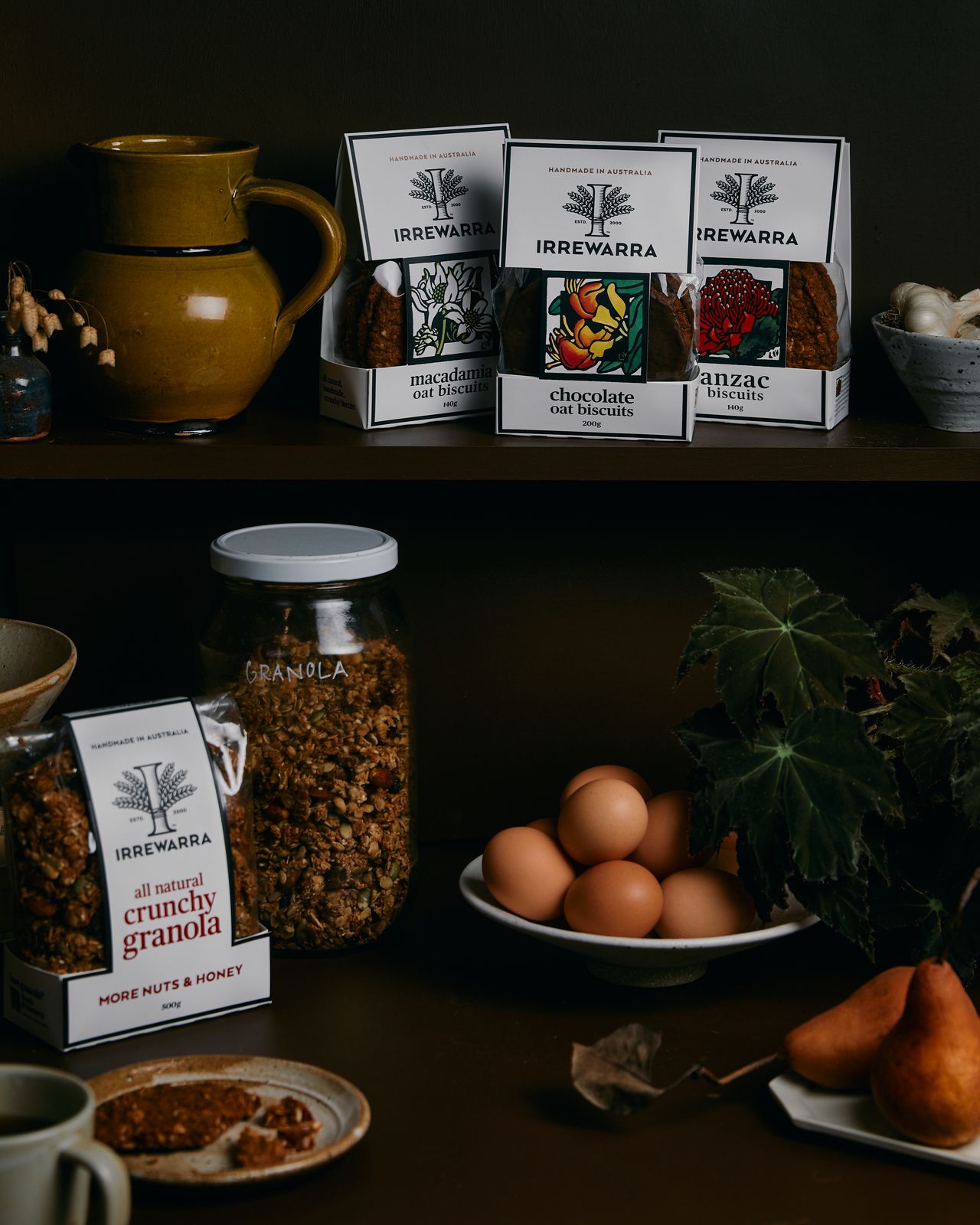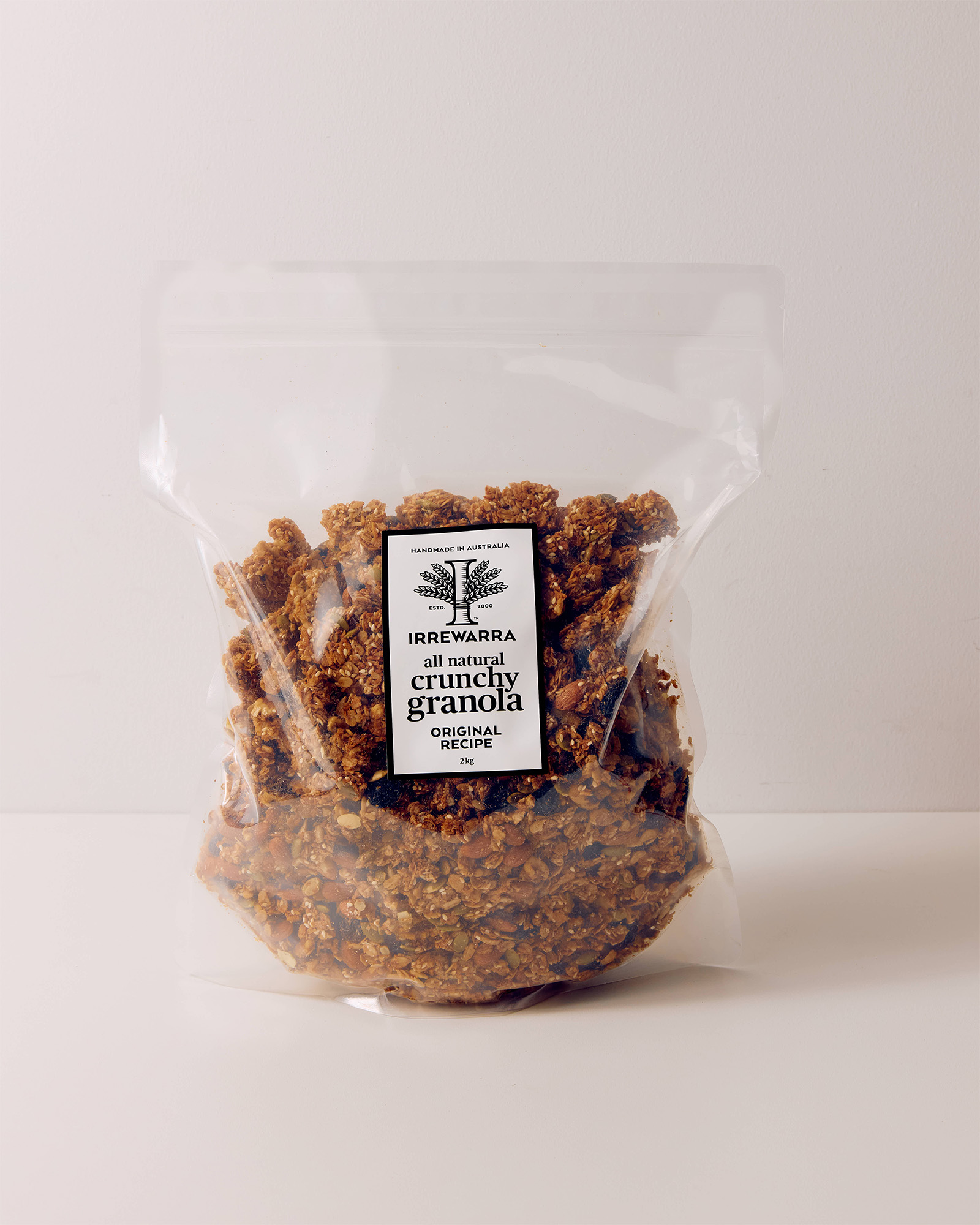Our Regenerative Journey: Three Years of Doongara
We’re approaching three years of ownership of our property on the Woady Yaloak River immediately west of the Cressy township. Our Irrewarra-Doongara Rewilding Project, continues our commitment to restoring this stretch of land along the Woady Yaloak to its natural state in terms of vegetation - grasses, shrubs, trees and sedges and wildlife including birds, insects and reptiles.
Much has happened since our last update, and we’re so glad to see what progress has been made in just a few short months.
Natural resource management consultant and friend of Irrewarra Frank Carland has been instrumental to this project, and he’s excited to see the difference the intensive works have made, in particular concentrating on weed control.
“Major infestations of exotic perennial grasses have been significantly reduced,” says Frank, “allowaing for the recovery and regeneration of native species.”
Perennial grasses targeted have included Chilean needle-grass, Phalaris, Cocksfoot, Prairie Grass, English Couch and Swamp Couch, as well as broadleaves such as thistles and mallows, and significant infestations of Bathurst Burr have been almost eliminated through a combination of spraying, manual removal and burning.
We are so pleased to see that this has enabled significant regeneration and recovery of the original native vegetation. The Woady Yaloak River frontage, once dominated by Phalaris nearly 2.0 m tall, is now dominated by the Common Reed and Silver Tussock, while many other native grasses are now found in abundance in the area.
This has been accompanied by a mass germination event of River Red Gum following the major flooding in the spring of 2022. Another native plant that has spread along the river and throughout the floodplain is Large Bindweed, which has beautiful glossy twining foliage and large white flowers during the warmer months.
Large Bindweed twining over Common Reed (Phragmites australis). Image: Frank Carland
You can easily see the progress of the site in the illuminating drone images (captured by our French holiday workers Guillame and Cécile) with vast areas of lush greenery along the river and patches where we are working to encourage regrowth of vegetation through land management, through the weed control program discussed by Frank.
Looking south, from just south of the bridge over the Woady Yaloak River at Cressy, the below image shows the billabong still with water from summer rains in January. Planting of River Red Gums around the billabong, from seed collected on site, is planned for this year. Along the banks of the river, tree-planting is not needed and seed spontaneously germinates.
Here, you’ll see some of the many ducks which inhabit Doongara enjoying the river. Dead trees provide much needed perching sites for birds, as well as being a food source, as insects break down the dead wood.
We love this next image, looking north over the billabong and the large pool of water as the river turns, as it really represents all the hard work that we and our team have been putting in to restore Doongara. Erosion can be seen on the east (right) side of the river from grazing (not our land). This contrasts Doongara on the west (left) side – beautifully green and vegetated.
In regenerative farming, it is critical to have a diversity of species in constant groundcover, so the land is never bare. Our custodianship of the river flats is helping with the climate warming crisis too, as the large diversity of indigenous species helps capture carbon dioxide from the atmosphere through photosynthesis, fixing the carbon as organic matter in the soil.
Looking north in the above image, you can see large tracts of ploughed bare ground in preparation for mono-crops such as canola. This industrial-style agriculture needs to be modified we are to avoid climate catastrophe and bring back life into our soils. Soil should never be bare! It will blow away in the wind, the sun will bake it and kill the life that should live in it.
Looking south, this is the u-turn in the River at Cressy. The river is working to cut through, which can be seen in the bottom right hand corner of the photo. Eventually it will, leaving the horseshoe billabong.
In the distance are the Ramsar Wetland salt lakes into which the Woady Yaloak flows. Over the last four months they have been teeming with migratory birds as summer rain provided fresh water and brine shrimp for the birds to feed on.
The above photo also shows the mulching/slashing of vegetation which has taken place over the last few months in place of cattle grazing. The slashing cuts the rank grass and encourages regrowth, while the cut grass feeds the soil with organic matter. Our aim is to resuscitate and enliven our soils.
Recently, resident bird expert Adam Fry also headed to Doongara to perform his autumn wildlife audit.
“The river is down a bit since the summer audit, but [there is] still plenty of water for the birdlife to flourish,” Adam said.
Plenty of birds enjoying the healthy Woady Yaloak River. Image: Adam Fry.
“There was only one new species today, the Dusky Woodswallow. They were roosting just south of the property, but I have no doubt they will utilise the Doongara area for hunting insects.”
The Dusky Woodswallow. Image: Adam Fry
“There were quite a few birds of prey moving about the area, it was great to see both Wedge-tailed and Little Eagles again … Hopefully with a bit of rain over the next couple of months, the water levels will not decrease much more before it starts going back up again, as the cycle goes”.
A White Plumed Honeyeater on the banks of the Woady Yaloak. Image: Adam Fry.
Golden-Headed Cisticola. Image: Adam Fry.
So what’s next for the Irrewarra-Doongara Rewilding Project? This winter will see the commencement of a revegetation program funded by the Corangamite Catchment Management Authority, which will complement the natural regeneration that has occurred following three years of intensive restoration works.
“The resilience of native vegetation and natural systems never ceases to amaze me,” says Frank. “….. once the threatening processes have been addressed and management actions undertaken to tip the scales back in the favour of the natives. The results achieved so far at Doongara have exceeded some fairly high expectations, when what has been achieved in three years was expected in perhaps four or five.”
You can read more about the Irrewarra-Doongara Rewilding Project here.
To stay up-to-date with the latest updates on the Irrewarra-Doongara Rewilding Project, follow us on Facebook and Instagram, or sign up to our monthly newsletter here.



















